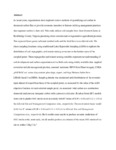| dc.rights.license | In Copyright | en_US |
| dc.creator | Brown, Michael William | |
| dc.date.accessioned | 2021-05-27T11:01:29Z | |
| dc.date.available | 2021-05-27T11:01:29Z | |
| dc.date.created | 2021 | |
| dc.identifier | WLURG38_Brown_GEOL_2021 | |
| dc.identifier.uri | http://hdl.handle.net/11021/35371 | |
| dc.description | Thesis; [FULL-TEXT FREELY AVAILABLE ONLINE] | en_US |
| dc.description | Michael William Brown is a member of the Class of 2021 of Washington and Lee University. | en_US |
| dc.description.abstract | In recent years, organizations have explored various methods of quantifying soil carbon to document carbon flux or provide economic incentive to farmers utilizing management practices that sequester carbon in their soil. This study utilizes soil samples from three livestock farms in Rockbridge County, Virginia practicing either conventional or regenerative agricultural practices. Two adjacent farms graze carbonate residual soils and the third farm is on alluvial soils. We chose sampling locations using conditioned Latin Hypercube Sampling (cLHS) to replicate the distribution of soil, topographic, and remote sensing covariates in the feature space of the sampled points. These topographic and remote sensing variables represent our understanding of soil development and carbon sequestration at the field scale using widely available data. Applied covariates include management practice, seasonal maximum NDVI from Planet imagery, USDA gSSURGO soil series clay content, plus slope, aspect, and Saga Wetness Index from LIDAR-based 3-m-DEMs. Sampling density was minimized until distributions of the covariate input dataset diverged from those of the sampled points, as measured by the value of the cLHS objective function. At each selected sample point, we measured total carbon in a combustion elemental analyzer and inorganic carbon with a pressure calcimeter. Random forest (RF) models were able to predict SOC stocks more accurately with R2 values of 0.59 + or - 0.04 and 0.22 + or - 0.03 at the Alluvial Site and Management Comparison sites, respectively. The multivariate linear model (LM) has R2 values of 0.50 + or - 0.06 and 0.12 + or - 0.01 at the Alluvial Site and Management Comparison sites, respectively. Both models seem unable to produce accurate predictions of SOC stocks at the point scale, but all models produce an estimate of the mean SOC stocks of the site to within 1 Mg C ha-1. | en_US |
| dc.format.extent | 27 pages | en_US |
| dc.language.iso | en_US | en_US |
| dc.rights | This material is made available for use in research, teaching, and private study, pursuant to U.S. Copyright law. The user assumes full responsibility for any use of the materials, including but not limited to, infringement of copyright and publication rights of reproduced materials. Any materials used should be fully credited with the source. | en_US |
| dc.rights.uri | http://rightsstatements.org/vocab/InC/1.0/ | en_US |
| dc.subject.other | Washington and Lee University -- Honors in Geology | en_US |
| dc.title | Estimating Soil Carbon Content of Grazing Lands in Rockbridge County, Virginia Using Statistical and Machine Learning Techniques (thesis) | en_US |
| dc.type | Text | en_US |
| dcterms.isPartOf | RG38 - Student Papers | |
| dc.rights.holder | Brown, Michael William | |
| dc.subject.fast | Soils -- Carbon content -- Analysis | en_US |
| dc.subject.fast | Virginia -- Rockbridge County | en_US |
| local.department | Geology | en_US |
| local.scholarshiptype | Honors Thesis | en_US |
